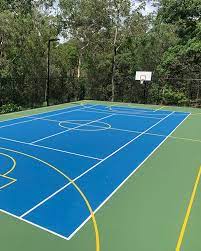The condition of the hooves conditions the productive future of the animals on the farm. An oversight of chiropody can result in animals that must be sacrificed prematurely, so that prompt attention and treatment of possible problems is mandatory. 75% of injuries occur in the lateral hooves, which are those that hold more weight.
Always remember that improper treatment of the hooves in the cattle, including horses, is among the major reasons that cause the premature loss of an animal. Here at Victorian Hoof Care Services we’ll be happy to assist you.
Prevention
The first question to consider is the function that the hooves fulfil, which is to provide stability to the animal. In this task, the external hooves are fundamental, which support a greater weight, which leads to up to 75% of the injuries occurring in the lateral hooves.
When it is necessary to proceed to a functional arrangement of the hooves, it is necessary to avoid cutting the outer hooves, since it could destabilize the animal. Sometimes, the breeder or technical staff that makes the cut is not properly instructed and ignores the impact of what they do.
It is a mistake to wait for a scheduled visit to treat an animal, because the problem will get worse.
Another important issue is the reaction time. The speed in detecting and treating an injury is directly proportional to the chances of cure. If it is only the lower part of the helmet that is slightly affected, it is very different from whether the chorion is affected, living tissue that produces keratin and is attached to the bone. Even worse is if the infection has already reached the bone. In that case, we are facing a waste cow.
As soon as the farmer detects a problem, he has to act in an agile manner. It is a mistake to wait for an already scheduled visit from the veterinarian or chiropodist because the initial problem is likely to get worse.
For an agile detection of problems, the observation of the cows is the best way. Those that are in abnormal positions, shrunken when standing, on tiptoe, or with their legs outward or inward, are likely to have hoof injuries.
Factors
The primary causes of foot injuries suffered by animals must be sought in multiple factors, such as nutrition, facilities, the genetics of the cow and its hormonal changes or the management of the farmer. Among the most important, are the following:
– Nutrition. The diet of the animal can generate a deterioration of the quality of the helmet known as laminitis, which is expressed in flattened feet or in the shape of a slipper, in which the interdigital gap is often closed or in which double soles are formed.
Excessive consumption of cereal can cause laminitis. In those cases, you have to touch up the diet together with the nutritionist.
A diet with an excessive consumption of cereal tends to cause ruminal acidosis, that is, a drop in Ph in the rumen below 5.5. If the Ph falls below that number, there is a death of bacteria in the rumen, which causes the spread of toxins through the blood. Obstructions can then occur in the chorion’s blood vessels. This alteration in the microcirculation of the helmet triggers secondary pathologies such as sole ulcers or affections in the white line of the hoof.
Around 40% of the pathologies of the foot are due to problems generated by the alteration in the blood circulation of the hoof, according to Francisco Javier Blanco. Occasionally there is a recurrence of episodes of laminitis called chronic acidosis or subclinical laminitis. In those cases, it is recommended to retouch the diet, together with the nutrologist, to reduce the starch.
– Facilities. The characteristics of the housing or if there is grazing are factors to be taken into account. A perforated concrete floor will cause an overrun, while the use of rubber beds will produce a lack of wear.
In cases of lack of wear, cows tend to have very long hooves, which leads to greater impacts on the heel and injuries, because the heel bulb is a part of the helmet that does not have the hardness or protection of the sole. Therefore, it is necessary to trim the hooves to stabilize the footprint of the animal.
If the animal has to stand for a long time, for example while awaiting milking, or if it has to walk a lot or is in contact with wet soils, it is common to also present diseases in the chorion, the part that separates the sole from the living tissues.
– Environmental problems. A clear example are the parks of heifers characterized by the accumulation of mud. In this environment, the appearance of dermatitis and infections is frequent, which are also characterised by being contagious. It is advisable to maintain proper hygiene of the hooves to avoid problems.
– Body state of the animal. A key element to prevent hoof injuries is the digital pad, which is located between the hoof and the live structures of the lower part of the hoof, such as tendons and blood vessels. The fat pad, as its name suggests, has the mission of cushioning the impact suffered by living structures. If the pad decreases its fat content, the appearance of lameness is more likely.
Thin cows are prone to suffer from this problem. It is also important to pay special attention to very productive cows and to the state of the animals in the first months after birth.
Having a specialist to periodically evaluate the foot health of the cows and who proceeds to the functional arrangement in the necessary cases.
Here at Victorian Hoof Care Services you can forget about limping because we will take care of cattle’s hooves properly and help you keep your cow healthy and strong for dairy production. You can trust real experts in the area with many years of experience in the field of hoof care.











